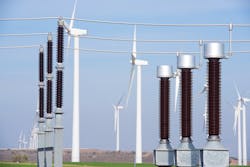Why AQPQ4Wind Standards Matter for Wind Industry Manufacturers
As demand for wind energy increases, the challenges faced by manufacturers and suppliers in the wind industry continue to increase. Surprisingly there has been little guidance for manufacturers when it comes to quality control. The fact that, until recently, manufacturers in the wind industry have been left to determine their own quality criteria has made it difficult to compare standards between different companies, further adding to the challenges faced by the industry.
Introducing APQP4Wind
The wind industry quality standard was inspired by the automotive and aerospace industries. These sectors have successfully developed and implemented quality standards that provide many of the quality management specifications that the wind industry desired.
For example, IATF 16949 is based on ISO 9001 standards and emphasizes defect prevention and the reduction of variation and waste in the automotive industry supply chain and assembly processes. However, the wind industry could not simply adopt this standard because certification under IATF 16949 requires delivery to the automotive industry, something that is not applicable to most wind suppliers.
The APQP4Wind standards have been created by industry-leading companies operating in the sector to substitute company-specific procedures and set a common advanced product quality planning method for all suppliers, sub-contractors, sub-suppliers, and utility companies operating in the wind industry. APQP4Wind has been endorsed by companies such as Vestas Wind Systems, Goldwind, Siemens Gamesa Renewable Energy, and GE Renewable Energy.
The main objective of the APQP4Wind methodology is to reduce the risk of defects and the costs associated with quality control for new and existing designs and components, ultimately reducing the leverage cost of energy for wind. It also aims to reduce complexity by making product quality assurance and product release processes as clear as possible, improving the alignment of quality criteria across the industry, and providing an effective medium to easily communicate product quality criteria to manufacturers and suppliers.
Exel Composites, a leading manufacturer of composites for wind turbine blades, is committed to the APQP4Wind certification and implements its guidelines across its manufacturing processes and sites. The company is also encouraging fellow manufacturers and suppliers in the wind industry to do the same.
Exel is an expert in pultrusion manufacturing processes. The pultrusion method allows the creation of continuous laminations while maintaining a perfectly uniform fiber placement across the profile. Because of the continuous nature of pultrusion, ensuring consistent product quality batch-to-batch is more straightforward compared to other composite production techniques.
To find out more about Exel Composites’ work in the wind industry, visit: https://exelcomposites.com/composite-solutions/composites-in-wind-power-applications/
About the Author

Dag Yang
Segment Owner Wind Energy, Exel Composites
Dag Yang is the Segment Owner of Wind Energy at Exel Composites.
